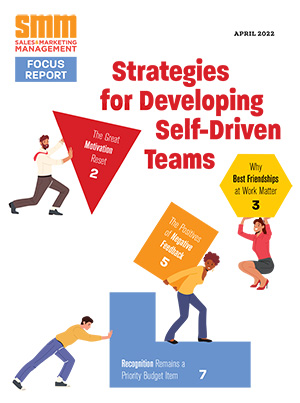
Learning doesn’t always have to come through formal training. That message is frequently preached, but just as frequently neglected.
Procter & Gamble leadership trainer Paul Smith shares an example of this in his book, “Lead With A Story” (Amacom, 2012). Smith recalls that before retiring in 1998, Bob Smith spent 41 years in purchasing for companies making products from commercial building material, to school furniture, to fertilizers. Early in his career, when he was first promoted to purchasing manager, he found that his predecessor had been buying steel almost exclusively from one supplier.
When he met the salesperson representing that steelmaker, he understood part of the reason why. He was the kind of person that buyers love to deal with — honest, fair and not afraid to go to bat for his customers back at headquarters if they needed something special.
But Bob believed having a single source of supply for a key material was risky.
He started purchasing from additional suppliers, but he still bought most of his steel from the longtime supplier.
Soon after, his ideal salesperson got promoted. Unfortunately, his replacement was as agitating as the previous salesperson was ingratiating. Skipping all of the normal pleasantries in his first sales call with Bob, the new sales rep bloviated about representing one of the biggest steel producers in the country and how he was Bob’s biggest steel supplier.
He pulled a detailed report out of his briefcase and said, “It looks like you were buying significantly more in prior quarters. What happened?”
Bob explained his philosophy about avoiding single suppliers. But the new salesman was unsympathetic to that answer. He left after telling Bob, “I certainly hope the next time I call on you we’ll have seen a change in these numbers.”
“I’ll bet you will,” was Bob’s simple reply.
By the time the salesperson returned to see him three months later, his orders had dropped 200 tons. He entered Bob’s office with an entirely different attitude. “I guess you can tell I’m new at this,” he said.
It was never clear to Bob why the salesman’s first call was so arrogant and caustic. But he learned that it didn’t work. He took the time to learn about his customer’s needs. Orders picked up over the next quarter and continued to grow
as the salesman’s skills grew.
It was an important lesson for the salesperson. Equally important, points out Paul Smith, is that it became an important lesson for the salespeople at Bob’s own company, who were scattered around the country. These salespeople dropped by to have informal chats with Bob whenever they were at HQ. Why? Because Bob’s office is where they heard stories like the one about the arrogant new sales rep.
“The lesson to be learned from this story isn’t just how a salesperson should treat the buyer. There’s a much more important idea,” writes Paul Smith. “Every company that manufactures a product has a purchasing department and a sales department. The buyers in the purchasing department, like Bob Smith, spend every day dealing with salespeople. Some are good, some are bad. Some they award enormous sales contracts to. Some they send away disappointed. Who better to teach the sales department how to do its job successfully than the buyers?”
Most companies situate the sales department and the purchasing department at opposite ends of the building. That’s a wasted opportunity, Paul Smith says. “If your training budget is a little tight, tap into the best source of advice
on successful sales techniques in your company — the purchasing department.”
Make arrangements for sellers and buyers to spend more time together. They both have much to learn from each other.


